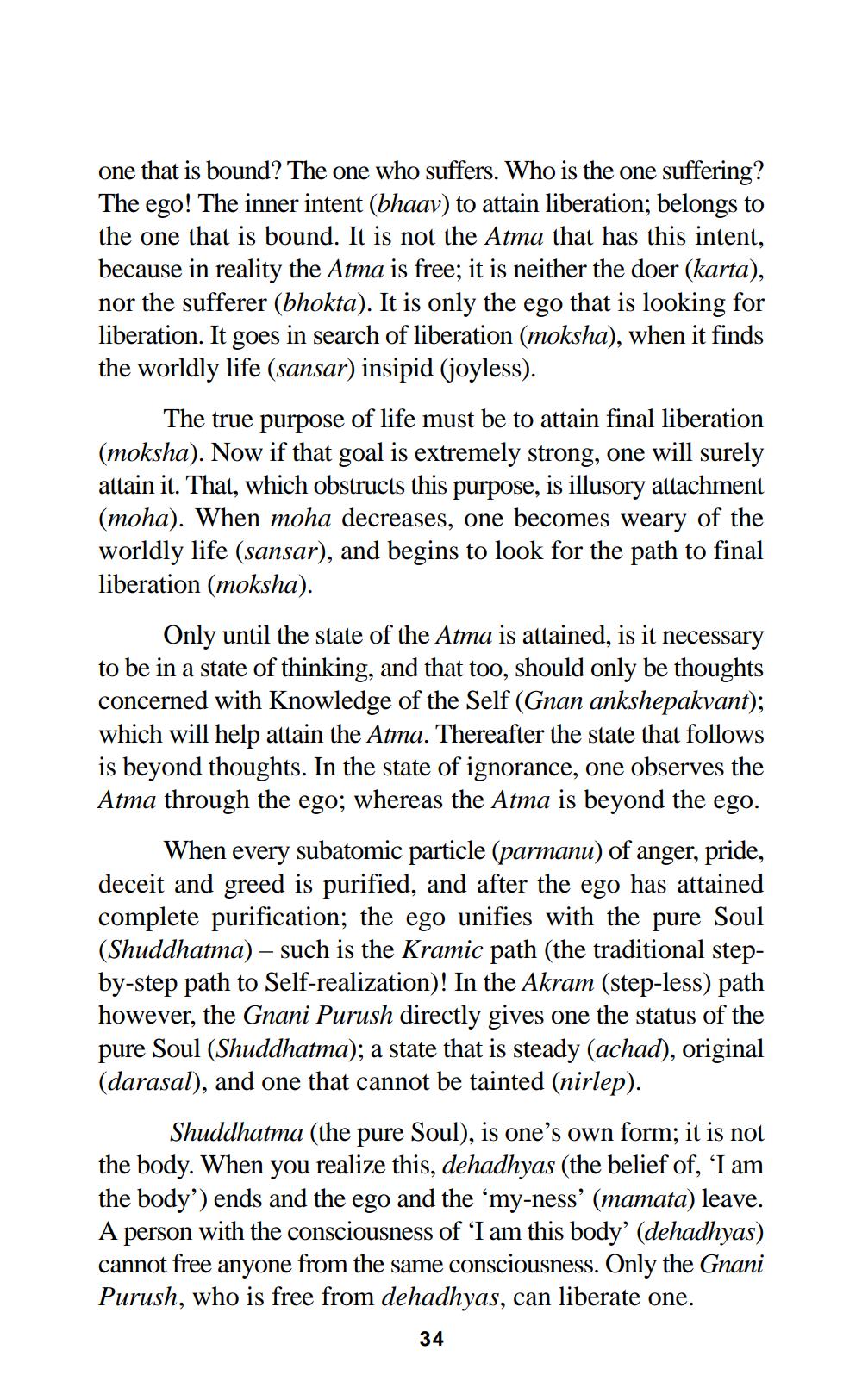________________
one that is bound? The one who suffers. Who is the one suffering? The ego! The inner intent (bhaav) to attain liberation; belongs to the one that is bound. It is not the Atma that has this intent, because in reality the Atma is free; it is neither the doer (karta), nor the sufferer (bhokta). It is only the ego that is looking for liberation. It goes in search of liberation (moksha), when it finds the worldly life (sansar) insipid (joyless).
The true purpose of life must be to attain final liberation (moksha). Now if that goal is extremely strong, one will surely attain it. That, which obstructs this purpose, is illusory attachment (moha). When moha decreases, one becomes weary of the worldly life (sansar), and begins to look for the path to final liberation (moksha).
Only until the state of the Atma is attained, is it necessary to be in a state of thinking, and that too, should only be thoughts concerned with Knowledge of the Self (Gnan ankshepakvant); which will help attain the Atma. Thereafter the state that follows is beyond thoughts. In the state of ignorance, one observes the Atma through the ego; whereas the Atma is beyond the ego.
When every subatomic particle (parmanu) of anger, pride, deceit and greed is purified, and after the ego has attained complete purification; the ego unifies with the pure Soul (Shuddhatma) – such is the Kramic path (the traditional stepby-step path to Self-realization)! In the Akram (step-less) path however, the Gnani Purush directly gives one the status of the pure Soul (Shuddhatma); a state that is steady (achad), original (darasal), and one that cannot be tainted (nirlep).
Shuddhatma (the pure Soul), is one's own form; it is not the body. When you realize this, dehadhyas (the belief of, “I am the body') ends and the ego and the 'my-ness' (mamata) leave. A person with the consciousness of 'I am this body' (dehadhyas) cannot free anyone from the same consciousness. Only the Gnani Purush, who is free from dehadhyas, can liberate one.
34




